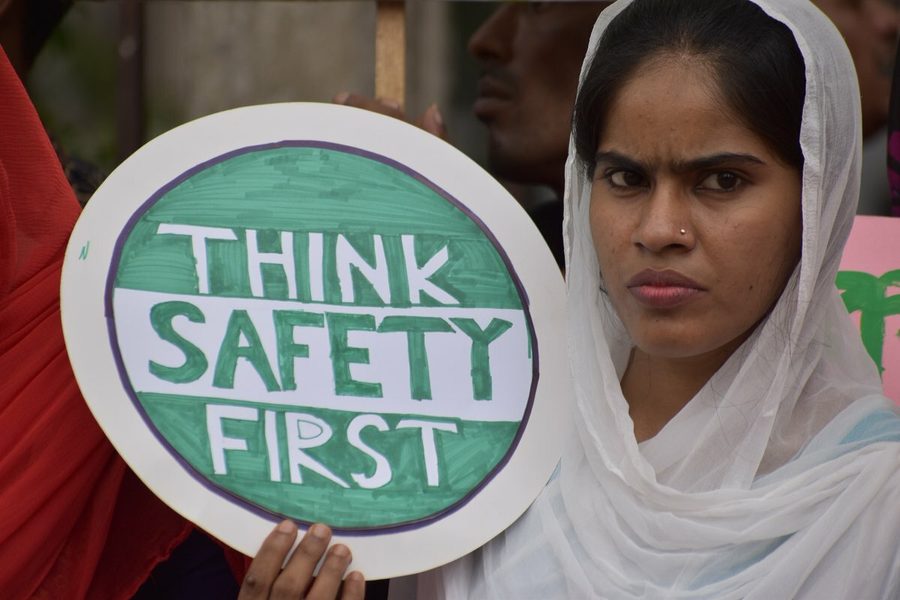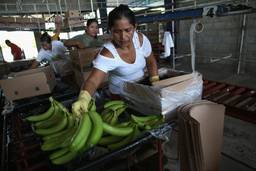11 Lessons From 11 Years After the Rana Plaza Disaster
Corporate exploitation has a playbook, so should we.
Anna Canning and Sarah Newell

On April 24, 2013, the Rana Plaza building collapsed in Bangladesh killing 1,134 people and injuring approximately 2,500 more. Those deaths were preventable. In the aftermath of the deadliest incident in the history of the apparel manufacturing industry, worker organizations and activists around the globe rallied around the demand: “Rana Plaza Never Again.”
Since that horrific day, workers have won binding, enforceable protections to make that rallying cry a reality. The Bangladesh Accord, now known as the International Accord, has received recognition around the globe for transforming basic workplace conditions for three million garment workers. And the Worker-driven Social Responsibility model has been adapted by tens of thousands more workers internationally to tackle the root causes of exploitation in their own workplaces.
On this anniversary, we remember those who died. Their deaths were both tragic and preventable. Workers saw the warning signs that the buildings were crumbling around them. Yet poverty wages, lack of strong unions, and widespread repression made it so that most workers went to work, knowing the risks but unable to walk away. Global fashion brands also knew all too well the crumbling infrastructure and coercive conditions that were a consequence of their purchasing practices, but they chose to look away. Government regulators and inspectors prioritized their own pocketbooks over enforcing legal protections that might have been on the books.
It’s a playbook that’s employed far too often in workplaces around the world. Here in the United States, the Occupational Safety and Health Administration (OSHA) reports that 5,486 workers died on the job in 2022. Those too are preventable deaths, and that number undercounts the many people who work on farms outside of OSHA’s regulatory reach (according to Civil Eats, this group includes some 96% of animal agriculture workers, to name just one dangerous industry). Black and brown workers and immigrant workers are more likely to work riskier jobs and to be killed on the job.
In our work at Partners for Dignity and Rights where we collaborate with a wide range of worker organizations, we have seen that many of the root causes of these deadly and exploitative conditions are a consequence of the same corporate playbook.
In the 11 years since the Rana Plaza collapse, we have learned some lessons broadly transferable from Bangladesh’s garment factories to workplaces worldwide where workers seek to win binding, enforceable protections to keep them safe at work.
Workers should be at the center of any program meant to protect them. Worker organizations need to be involved in the development of any program from the start, not just as “stakeholders” after the fact. Strong enforceable agreements require strong worker organizations and unions. Yet outside expertise plays a critical role as well — part of the success of the International Accord is how it has harnessed the expertise of structural engineers and specialists to ensure protections are fit for purpose.
Demands need to be enforceable in scope. There’s a tension between the human rights that every living person possesses and what rights a group of workers has the power to bring a brand to the table to negotiate, win, and enforce. And in large part, what’s enforceable depends on what you can win at the negotiating table. The Accord relies on brands leveraging their purchasing power to ensure suppliers follow worker-driven criteria for safe workplaces. Until legislation compels brands to take responsibility for the consequences of their purchasing practices, we can only enforce what we can get brands to sign onto.
Transparency is a strategic first step — but not an endgame in itself. The Accord requires extensive reporting from participating brands and suppliers. Worker advocates have then used that information to connect non-participating brands that disclose their supplier lists to factories where repairs are needed, and then build and win campaigns to protect more workers.
Follow the money to make meaningful change possible. Global brands are quick to announce unfunded commitments to everything from living wages to climate change. Too often, those pledges disappear, leaving workers with little but a trail of greenwashing PR to point to. The Accord requires brands to contribute to suppliers’ cost of compliance, and campaigners collaborate to call in companies who try to freeload off participating brand’s factory upgrades.
Strong enforceable agreements require strong worker organizations and unions. Winning enforceable agreements at the scale of the Accord requires sustained relationships across organizations and the ability to adapt and negotiate a clear vision for the ever-evolving future.
Worker-driven means deep investment in leadership development. Strong organizations need seasoned leaders and new up-and-coming leaders. A strong, engaged base and dynamic leadership help ensure that yesterday’s wins are the foundation for tomorrow’s.
Anticipate opposition, and be prepared to meet it. Local power players and corporations alike are often deeply invested in the exploitative status quo. Be prepared for both overt opposition and co-optation of worker-driven efforts.
Be prepared to win. The agreements that became the Bangladesh Accord existed for two years before the Rana Plaza collapse, and garment worker unions had been ironing out the terms of binding agreements for years before. Yet only two brands had signed on. The massive public outrage at Rana Plaza created a moment in which campaigners were able to compel brands to sign the agreements.
Stay true to scale. Too often, programs that claim to cover workers in long value chains make sweeping claims about being “fair” and “ethical,” with claims to living wages that are not backed by either the standards or their impact reporting. From the Accord, we can see the strength of having a strong program that is focused on a few key issues and builds on those successes over time. “Is it scalable?” is a question we’re often asked about the Worker-driven Social Responsibility model, and the real question is usually, “who is trying to scale it and how?”
Bring the fight to the corporate decision-makers with a strong, broad base of allies. Corporations rely on keeping working conditions out of sight and out of mind. A key part of winning the Accord was building strong coalitions of unions from around the world, students, and other activists to bring Bangladeshi garment workers’ demands straight to corporate headquarters where they couldn’t be ignored.
Strong campaigns keep building victories over time. The movement infrastructure that we collectively built to win the Accord and its subsequent expansions started in the 1990s. And these aligned, worker-driven movements continue to be a strong force for corporate accountability and workers’ rights in the global garment industry. When the Covid pandemic hit, we had the relationships and tools to pivot and win back over $10 million dollars in stolen wages from workers hit hard by factory closures around the world.
These lessons have been hard-learned over the past decades of organizing. And while the Accord is transformational, more is still needed. The demand for enforceable protections isn’t a flashy one. First and foremost, it’s about winning a world where workers can leave work, go home to their families, and go on to organize another day. There is immense pressure where life and death are on the line. It has taken a global coalition years to win workers the ability to enter workplaces without the fear that they’ll be crushed by crumbling buildings. Yet the fight goes on. Workers in Bangladesh are still fighting for decent wages and to protect their right to organize in the face of deadly repression. The still-unsolved murder of union organizer Shahidul Islam last year underscores the high stakes for those who speak up.
Even as we gather lessons from the last decades of organizing, we recognize that far too many brands, especially U.S. brands, still haven’t signed the Accord. As we build stronger movements for workers’ rights, for human rights, and for corporate accountability across borders, one small way we can support this global movement is to demand that the remaining holdouts sign the Accord so that a tragedy like Rana Plaza never happens again.
Anna Canning is the Director of Communications for the Worker-Driven Social Responsibility Network, an anchored network of Partners for Dignity and Rights.
Sarah Newell is the Director of Transnational Strategies for the Worker-Driven Social Responsibility Network, an anchored network of Partners for Dignity and Rights.





